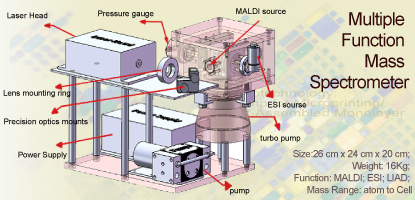
This Division has two major goals. One is technology and instrumentation development and the other is computational bioinformatic technology development. For physical genomics program, it aims to develop new tools with improved sensitivity and resolution for use in studying the dynamics of complex biological systems. Current interests include development of biological mass spectrometry, microarray and nanotechnology for genomic and proteomic research, biomarker discovery, biophotomics for single cell research, fabrication of biological and biomimetic materials and development of functional supramolecular structures for disease diagnosis. For computational genomics, the aim is to pursue functional and evolutionary genomics as well as structural informatics, using a combination of tools and resources from bioinformatics, computer sciences, statistics, molecular biology, biochemistry, genetics and evolution. It focuses on development of methods for analysis of genomic sequences, prediction of alternative splicing, identification of gene regulation pathways, study of protein interaction networks, study of regulatory networks, structure-based molecular modeling and design, and prediction of pharmacology. The long-term goal is to develop computational models for use in understanding cellular functions and other biomedical applications such as in silico drug prediction.
During the next three to five years, we will continue to focus our effort in the above areas. We believe there is a good possibility we will be in a leading position worldwide in mass spectrometry development and biomarker discovery, comparative genomics of human and apes, and platform and technology buildup for single cell transcriptomics and proteomics.

Division Director :
Dr. Tien-Hsien, Chang
Members (ordered by English last names)
Professors:
Dr. Ying Chih Chang
Dr. Wei Chen
Dr. Trees-Juen Chuang
Dr. Chih-Hao Lee
Dr. Yi-Sheng Wang
Research Specialists:
Dr. Jung-Lee, Lin